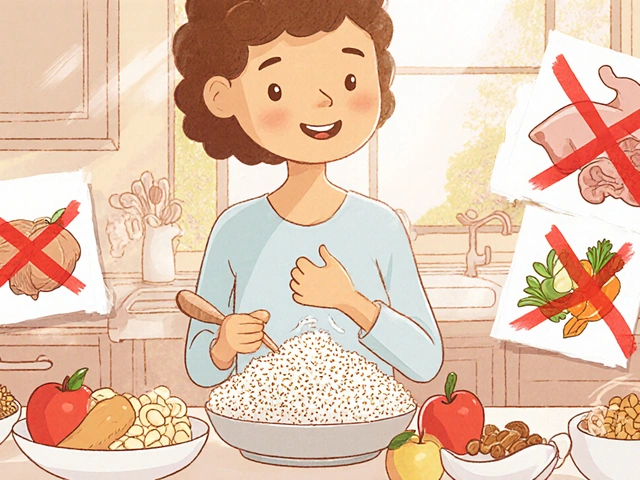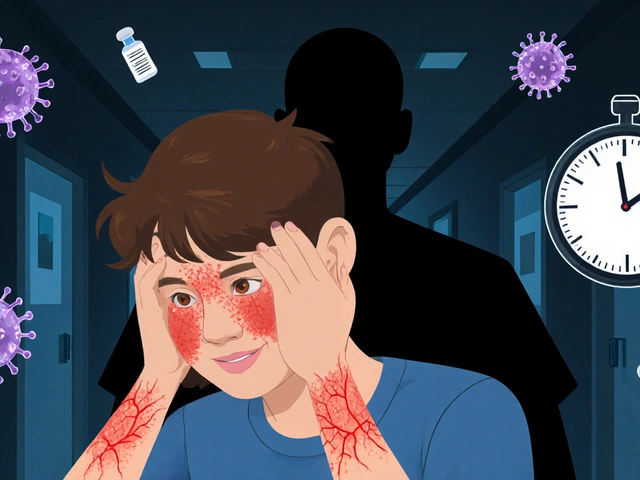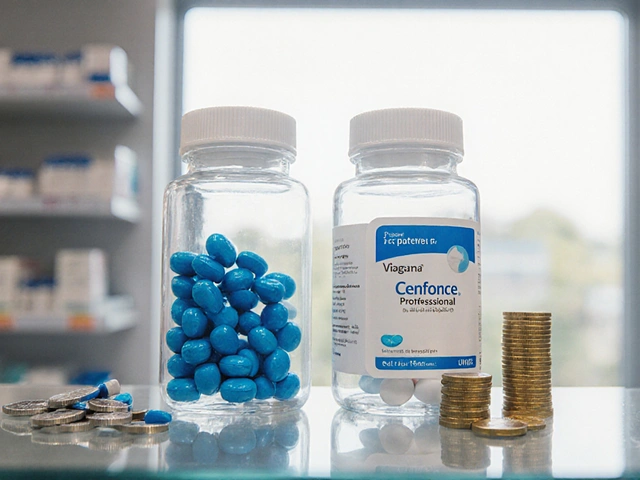When you pick up a prescription, do you ever wonder why the pill looks different this time? Maybe it’s a different color, shape, or even has a weird marking on it. You might think, Is this the same medicine? You’re not alone. In fact, a 2016 CVS Health survey found that 87% of patients had questions or doubts about generic drugs. That’s more than eight out of every ten people.
The truth? Generic drugs are not cheaper because they’re worse. They’re cheaper because they don’t need to repeat the same expensive research and marketing that brand-name drugs do. The U.S. Food and Drug Administration (FDA) requires every generic drug to have the exact same active ingredient, strength, dosage form, and route of administration as the brand-name version. And it’s not just a claim - they prove it. Every generic must pass strict bioequivalence tests, meaning it delivers 80-125% of the active ingredient into your bloodstream at the same rate as the brand. That’s not close. That’s the same.
Why Do So Many People Still Doubt Generics?
The problem isn’t science. It’s perception. People see a different-looking pill and assume it’s a different medicine. A 2022 University of Michigan survey of over 1,200 patients found that 23% of them questioned whether a generic was working because it looked different. That’s not irrational - our brains are wired to notice changes. But it’s a problem when those changes are harmless.
Another issue? The nocebo effect. That’s when you expect something to cause side effects - so you feel them, even if the drug is identical. A 2021 study in the Annals of Internal Medicine showed patients who knew they were taking a generic were 18.7% more likely to stop taking their medicine because they thought it wasn’t working. But when those same patients didn’t know whether they were on brand or generic, their side effect rates were the same. The difference wasn’t the drug. It was the belief.
What Do the Experts Say?
Doctors, pharmacists, and regulators all agree: generics are safe and effective. In a 2021 survey by the American Pharmacists Association, 97% of pharmacists said they’d have no hesitation filling a generic prescription for themselves or a family member. The American Medical Association backed this up in 2022 with a formal resolution urging doctors to educate patients about generic equivalence.
The FDA’s Office of Generic Drugs reviews about 1,000 applications for new generics every year. Each one is checked for quality, purity, and how well the body absorbs it. The process is so strict that the European Medicines Agency - which oversees drug safety across 27 countries - confirms U.S. and EU generic standards are identical.
And the numbers speak for themselves. As of 2023, 90.8% of all prescriptions filled in the U.S. were for generic drugs. That’s over 6.8 billion prescriptions a year. If generics were unsafe or ineffective, that number wouldn’t be climbing - it would be collapsing.
Where Generics Fall Short - And Why
There’s one area where generics get tricky: antiepileptic drugs. A 2023 study in Epilepsy & Behavior found a slightly higher rate of seizure recurrence when patients switched from brand to generic versions. But here’s the catch: the study only looked at patients who were switched multiple times - not those who started on a generic from the beginning. The American Academy of Neurology says this is an exception, not the rule. For 99% of other medications - blood pressure pills, antibiotics, antidepressants, insulin - there’s no meaningful difference.
Another challenge? Complex generics. Inhalers, creams, patches, and injectables are harder to copy exactly because they rely on delivery systems, not just chemicals. The FDA’s 2023 survey showed 40% higher confusion among patients using these types of generics. That’s why community health educators now use visual aids - diagrams of how inhalers work, photos of patches, even videos showing how the medicine gets into the body.
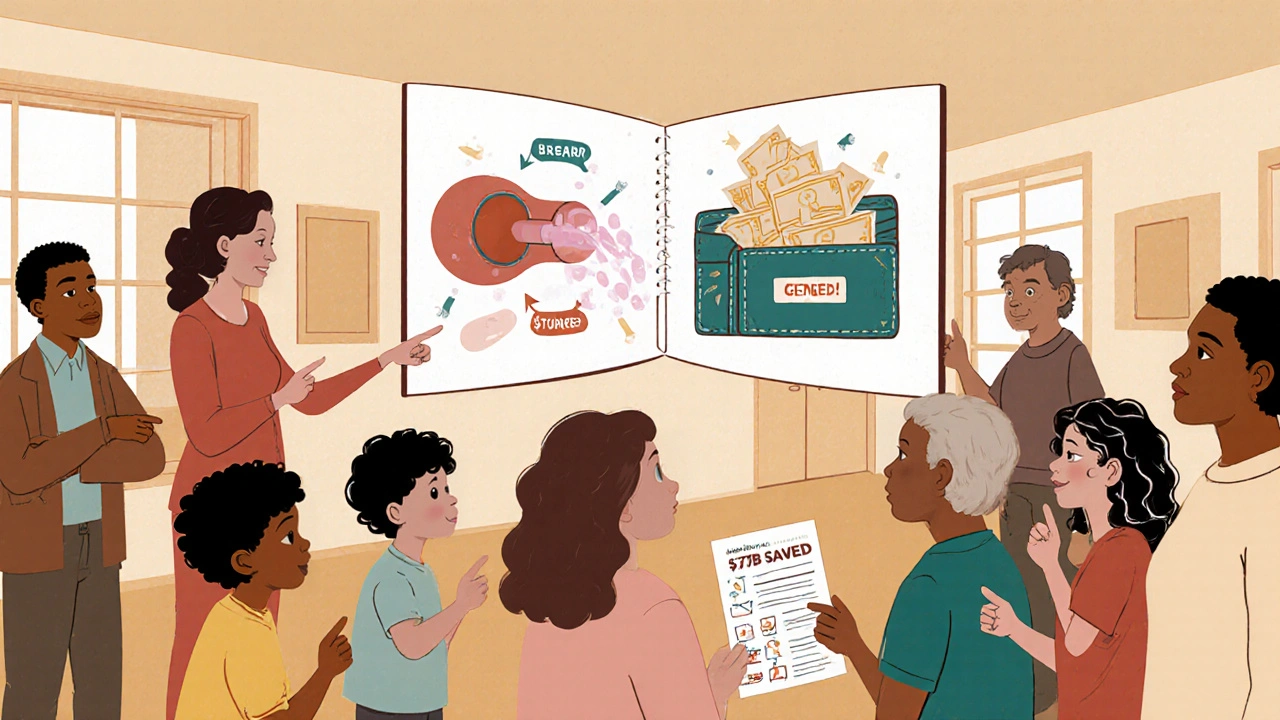
How Community Health Presentations Make a Difference
One of the most effective tools for fixing misinformation? Talking to people face-to-face.
The FDA’s Generic Drugs Stakeholder Toolkit gives community health workers 14 proven ways to explain generics clearly. One of the most powerful? The Teach-Back method. Instead of saying, “Generics are the same,” you ask: “Can you tell me in your own words why this pill is just as good as the brand?”
When Community Health Center of Burlington started using this method in 2021, patient acceptance of generics jumped by 37% in just six months. Why? Because people didn’t just hear information - they repeated it back. That’s how understanding sticks.
Another simple trick? Show the pill. Hold up the brand-name pill and the generic side by side. Say: “See this? This is the active ingredient. It’s the same. This part - the color, the shape, the marking - that’s just the filler. It doesn’t change how the medicine works.”
Cost Savings That Change Lives
Let’s talk about money. Generic drugs cost, on average, 80-85% less than brand-name drugs. That’s not a small discount. That’s life-changing.
In 2022, generic drugs saved the U.S. healthcare system $377 billion. That’s enough to cover the annual cost of care for every person in New York City - twice over.
But the biggest savings aren’t in hospital bills. They’re in adherence. A 2021 study in Health Affairs tracked 3.2 million low-income patients. Those who switched to generics were 22% more likely to keep taking their medicine. Why? Because they could afford it. When people have to choose between medicine and groceries, generics aren’t just a smart choice - they’re the only choice.
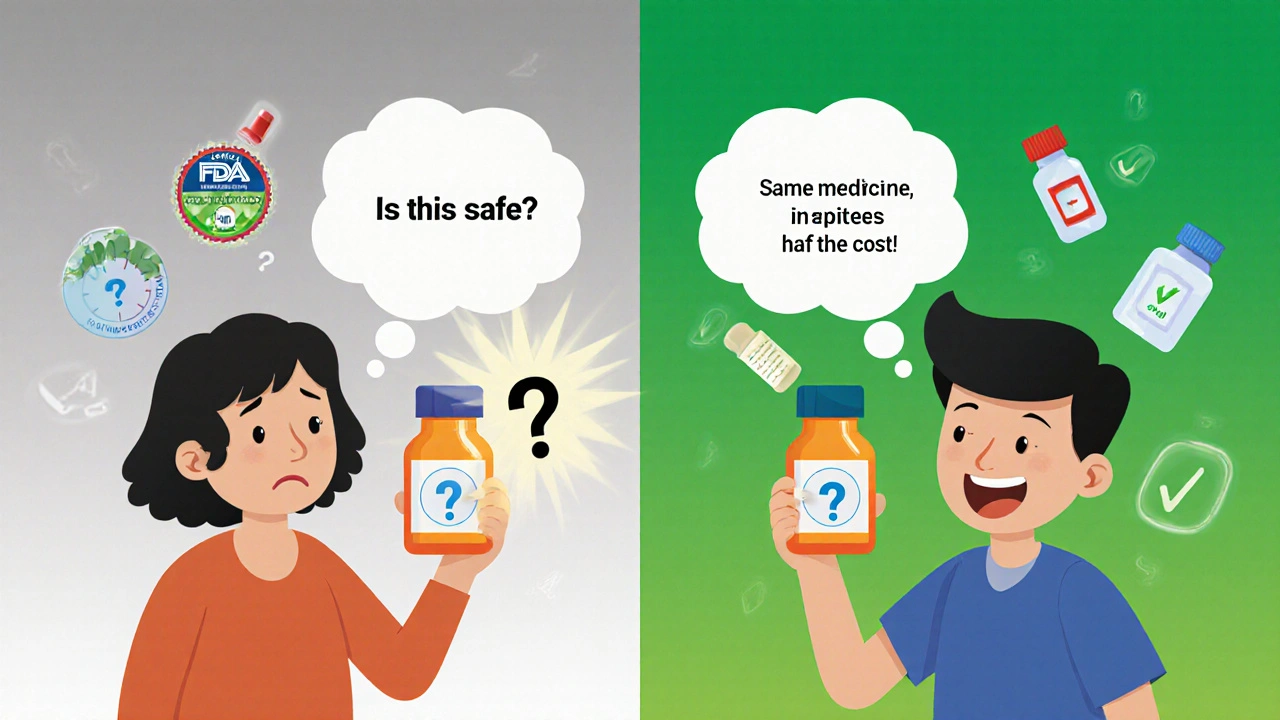
What’s Changing in 2025?
By January 1, 2025, every Medicare Part D plan will be required to hand out standardized education materials about generics to every beneficiary. That’s new. That’s big. And it’s happening because the government finally realized: education isn’t optional. It’s part of care.
The FDA’s “Generics 101” video series, launched in 2023, is already showing results. Among Medicare beneficiaries aged 65+, viewers showed a 31% improvement in knowledge retention. That means more people understand what they’re taking - and why it’s safe.
Meanwhile, the Association for Accessible Medicines has distributed over 2.7 million brochures through community health centers nationwide. These aren’t fancy pamphlets. They’re simple, clear, translated into Spanish and other languages, and designed for people who read at a 6th-grade level.
What You Can Do
If you’re a patient: Ask your pharmacist. Say, “Is there a generic version of this? Is it safe?” Don’t be shy. Pharmacists are trained to explain this stuff.
If you’re a caregiver or community worker: Use the FDA’s free toolkit. Show pictures. Use the Teach-Back method. Don’t assume people know. They don’t.
If you’re a provider: Don’t just write a prescription. Say, “I’m prescribing this generic because it’s just as good and will save you hundreds a year.” Your words matter more than any brochure.
Generics aren’t second-rate. They’re the backbone of affordable care. And when people understand that, they take their medicine. They feel better. They stay out of the hospital. That’s not just science. That’s health equity in action.
Are generic drugs really as effective as brand-name drugs?
Yes. The FDA requires generic drugs to have the same active ingredient, strength, dosage form, and route of administration as the brand-name version. They must also prove bioequivalence - meaning they deliver the same amount of medicine into your bloodstream at the same rate. Over 90% of prescriptions filled in the U.S. are for generics, and they’ve been used safely for over 40 years.
Why do generic pills look different from brand-name pills?
The appearance - color, shape, size, and markings - is determined by the manufacturer and doesn’t affect how the drug works. These differences are due to inactive ingredients like dyes or fillers, which are not regulated the same way as active ingredients. The active medicine inside is identical to the brand-name version.
Can I trust generics for chronic conditions like high blood pressure or diabetes?
Absolutely. Generics make up over 95% of prescriptions for cardiovascular drugs and diabetes medications. Studies show no difference in outcomes between brand and generic versions for these conditions. The American Medical Association and the Academy of Managed Care Pharmacy both endorse generics as safe and effective for long-term use.
Why do some people say generics don’t work for them?
Sometimes, it’s not the drug - it’s the belief. The nocebo effect can cause people to feel side effects simply because they think the generic is inferior. In rare cases, switching between multiple generic versions of antiepileptic drugs has been linked to seizure recurrence, but this is an exception. For nearly all other medications, switching between brand and generic causes no change in effectiveness or safety.
How much money can I save with generics?
On average, generics cost 80-85% less than brand-name drugs. For example, a brand-name blood pressure pill might cost $150 a month, while the generic costs $15-$30. That’s $1,500-$1,800 saved per year - enough to cover co-pays, transportation to appointments, or even groceries.
Are generics safe for older adults and people on multiple medications?
Yes. In fact, older adults benefit the most from generics because they’re more likely to take multiple medications and have fixed incomes. Medicare Part D plans are now required to provide generic education materials to all beneficiaries by 2025. Studies show that when seniors understand generics, they’re more likely to stick with their prescriptions - reducing hospital visits and improving health outcomes.
Can I switch from a brand-name drug to a generic safely?
Yes - and your doctor or pharmacist should guide you through it. For most drugs, switching is seamless. For a few complex ones - like certain seizure or thyroid medications - your provider may recommend staying on one version to avoid any potential disruption. Always talk to your provider before switching, but don’t assume you can’t switch at all.
Where can I find reliable information about generic drugs?
The FDA’s website has a free library of over 2,100 educational resources - videos, infographics, fact sheets - all in English and Spanish. Community health centers also use the FDA’s Generic Drugs Stakeholder Toolkit, which includes proven communication methods for explaining generics to patients with low health literacy.



